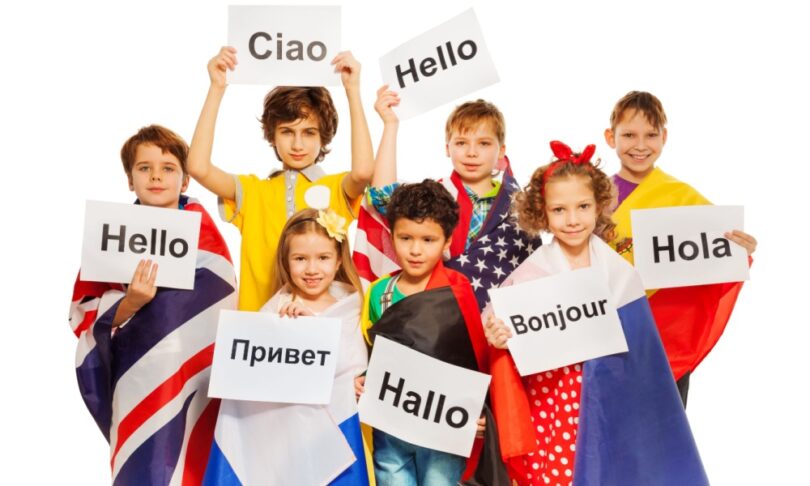When many travelers plan a trip to Europe, this often includes stopping in several different countries. As there are a number of different countries in Europe that are quite close together, you can visit France one day and be in Italy by the next. Europe-hopping does not come without consequences, namely in the language department. As you travel between countries speaking French, German, Italian and Spanish (just to name a few), the greetings you use daily for people change constantly. And as everyone knows in all languages, a bad greeting can lead to getting off on the wrong foot in an instant. To avoid any language faux pas, we’ve come up with an easy greeting guide for some of the most popular languages in Europe.
How to Greet People in French
 When you encounter French speakers in Europe, you will want to greet them with Bonjour in the morning. While this can mean a simple hello, it also can work for saying, “Good morning.” In most cases, you can use Bonjour once the clock changes to the afternoon to say, “Good afternoon.” However, once it’s becoming more nighttime, you should greet people with a Bonsoir. Once the night is over, you can simply say Bonne nuit for good night. And when you are done communicating in general with someone in French, a simple Au revoir will do for good-bye.
When you encounter French speakers in Europe, you will want to greet them with Bonjour in the morning. While this can mean a simple hello, it also can work for saying, “Good morning.” In most cases, you can use Bonjour once the clock changes to the afternoon to say, “Good afternoon.” However, once it’s becoming more nighttime, you should greet people with a Bonsoir. Once the night is over, you can simply say Bonne nuit for good night. And when you are done communicating in general with someone in French, a simple Au revoir will do for good-bye.
Italian Ways to Say Hello
In Italy, Most people will greet you with a Buongiorno in the morning, literally meaning good morning. By the afternoon, things get a little tricky. You might hear Buona sera as early as noon in Italy, meaning good afternoon. Some Italians will say Buon pomeriggo as well in the afternoon to greet others. Buona sera is used as the day drags on into the evening, meaning good evening at this point. To say good night, Buona notte is generally uttered. When you are ready to say goodbye to Rome, Arrivederci Roma rolls off of the tongue.
German Greetings Throughout the Day

If you get off any flights to Germany, be sure to adjust your watch so you know the local time and can greet people accordingly. Germans start their mornings off with a Guten morgen. By the afternoon, it’s more customary to greet others with a Guten tag, meaning good day or good afternoon. In the evenings, you’ll want to greet people with a Guten abend, meaning good evening. To say good bye, Germans in more formal settings will say Auf wiedersehen.
How to Say Hello in Spanish
For Spanish speakers in Europe, you will hear Buenos días to kick off the day, meaning good morning. For the afternoon, those speaking Spanish switch to greeting one another with Buenas tardes. To say good night in Spanish, Buenas noches is appropriate. And when you have to leave, Adiós is always understood.
Portuguese Ways to Greet People
Portugal might be a small country in Europe, but it’s also a popular one to visit. For travelers heading to Portugal, you’ll need to greet people in the mornings with a Bom dia. For the afternoon, you can say Boa tarde. Boa noite means good evening and good night in most cases. To say goodbye, simply utter Adeus.
Greetings in Greek

The Greeks put extra emphasis on their greetings, making them even more fun to say. To say good morning in Greek, you will want to say Kalimera. Kalispera in Greek translates as good afternoon and also good evening. To wish someone a good night, Kalinihta will get the job done. When it’s time to part with Greece, a simple Yassas or Adio will do.
Related: Traveling to Europe? These Countries Will NOT Take Your Euros
Russian Ways to Say Hello
There are quite a few ways to say hello in Russian, at least 10. However, so as to not get overwhelmed, here is just two ways to say hello in Russian. Zdravstvuyte is pronounced using three consonants. It’s the more formal version of saying hello and can be used in any situation regardless of the time of day. The less formal and second way of saying hello is to say Privyet. Privyet is more along the lines of saying hi rather than the full hello and is normally used when greeting close friends, family members, or other close acquaintances.
Ways to Greet Other People in Turkish

There are two ways to greet someone in Turkey. The first way of saying hello in Turkish is by saying Merhaba. This word represents the formal version of saying hello and is typically used to greet someone you do not know. It is also the most well-known Turkish greeting, so it can be used anytime, day or night. Selam is the second way of saying hello or hi but should only be used to greet close friends or relatives.
Ukrainian Greetings (Formal & Informal)
In Ukraine, there are also various ways of greeting someone, as with the former, here are two ways of saying hello in Ukrainian. Dobryj den is the most common and formal way of saying hello. You would typically greet someone Dobryj den if it is someone you do not know. Pryvit is also known to be used as an informal greeting in Ukrainian when saying hi or hey to close friends or relatives. Yes, it is a greeting that was adopted from Russian, in case you were wondering about its similarity.
How to Say Hello in Polish
Technically, there are multiple ways of formally greeting someone in Polish. It’s more catered to the time of day, rather than just a general hello. However, if you are a tourist, you’ll be able to get away with greeting someone Dzień dobry, which translates to good morning/ good afternoon even if it is evening. If you do want to get technical and want to greet someone formally in the evening, you’d say, Dobry wieczór which means good evening. For an informal approach in greeting a close friend, acquaintance, or relative then you would say, Cześć which means hello.
Ways to Say Hell in Dutch

Just like in Polish, formal greetings in Dutch are dependent upon the time of day you will be greeting someone. For instance, Goedendag is formally greeting someone good day, which is used during daytime like mornings to early evenings. When evening arrives, Goedenavond is used to greet someone formally and translates to good evening. The common and informal way of saying hi or hello to friends and relatives would be to simply say Hallo.
Swedish Greetings
Formal Swedish greetings are also time-dependent. Just like in English, formal greetings are generally separated into three phrases, “good morning,” “good afternoon,” and “good evening”. Thus, the equivalent formal Swedish phrases for those greetings are, Godmorgon, Goddagens, and Godkväll, respectively. In Sweden, when someone says a greeting word twice, it means they are in a good mood or want to sound happier. With that said, Hej is the common and the informal way of saying hello or hey. So if you were to say Hej, Hej then you are extra happy to say hello to your friends and family! You’ll most likely hear Hej as the common form of generally greeting someone in Sweden, even if you don’t know someone that well.
Have any advice to add on ways to say hello in European languages? Leave it in the comments below!








